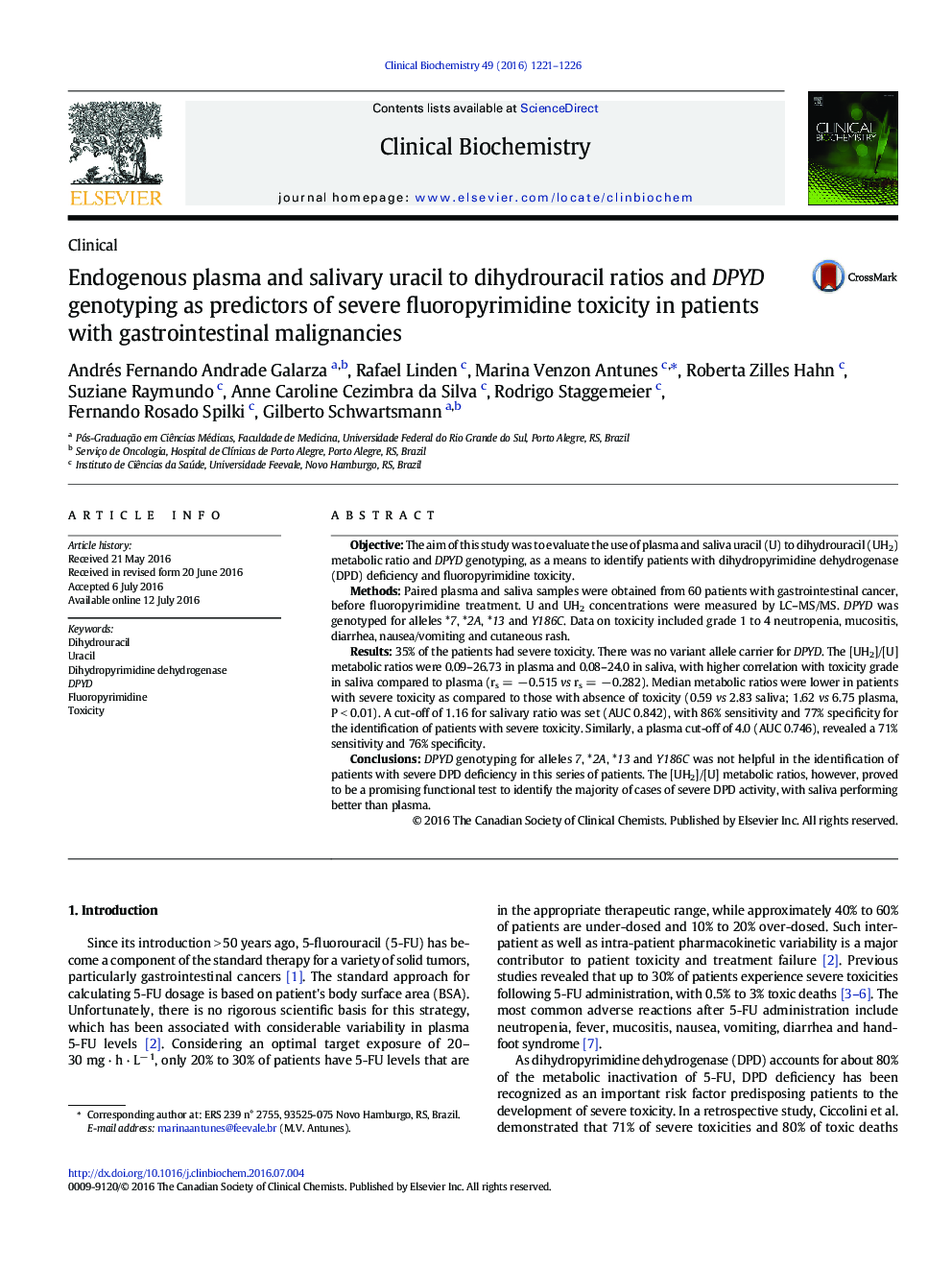| Article ID | Journal | Published Year | Pages | File Type |
|---|---|---|---|---|
| 5510146 | Clinical Biochemistry | 2016 | 6 Pages |
â¢The limited sensibility of DPYD genotyping significantly limits its clinical use.â¢Plasma and salivary DPD tests can detect patients at risk of severe toxicity.â¢Salivary [UH2]/[U] ratio performed better than plasma.â¢Salivary test had 85.7% sensitivity and 76.9% specificity to predict severe toxicity.
ObjectiveThe aim of this study was to evaluate the use of plasma and saliva uracil (U) to dihydrouracil (UH2) metabolic ratio and DPYD genotyping, as a means to identify patients with dihydropyrimidine dehydrogenase (DPD) deficiency and fluoropyrimidine toxicity.MethodsPaired plasma and saliva samples were obtained from 60 patients with gastrointestinal cancer, before fluoropyrimidine treatment. U and UH2 concentrations were measured by LC-MS/MS. DPYD was genotyped for alleles *7, *2A, *13 and Y186C. Data on toxicity included grade 1 to 4 neutropenia, mucositis, diarrhea, nausea/vomiting and cutaneous rash.Results35% of the patients had severe toxicity. There was no variant allele carrier for DPYD. The [UH2]/[U] metabolic ratios were 0.09-26.73 in plasma and 0.08-24.0 in saliva, with higher correlation with toxicity grade in saliva compared to plasma (rs = â 0.515 vs rs = â 0.282). Median metabolic ratios were lower in patients with severe toxicity as compared to those with absence of toxicity (0.59 vs 2.83 saliva; 1.62 vs 6.75 plasma, P < 0.01). A cut-off of 1.16 for salivary ratio was set (AUC 0.842), with 86% sensitivity and 77% specificity for the identification of patients with severe toxicity. Similarly, a plasma cut-off of 4.0 (AUC 0.746), revealed a 71% sensitivity and 76% specificity.ConclusionsDPYD genotyping for alleles 7, *2A, *13 and Y186C was not helpful in the identification of patients with severe DPD deficiency in this series of patients. The [UH2]/[U] metabolic ratios, however, proved to be a promising functional test to identify the majority of cases of severe DPD activity, with saliva performing better than plasma.
